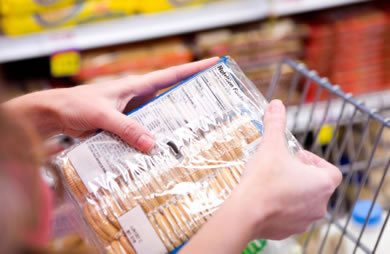|
Those of us that are nutritionally aware have become quite competent at reading the nutrition label as we make purchasing decisions at the supermarket. Last fall, Coach Dean shared his concerns with the Smart Choices labeling program when Froot Loops was considered a smart choice. The Food and Drug Administration also warned the food industry to standardize the proliferation of symbols and ratings used to highlight nutritional claims on the front of food packages. Last year the F.D.A. shared with manufactures the belief that front-of-pack labeling is a promising way to help consumers make informed food choices. They also shared concerns related to their "research which found that with such labeling, people are less likely to check the Nutrition Facts label on the back or side panel of foods." Because of this, the front-of-package information they seek is more than just a symbol. Because of the risk of decreased use of nutrition information labeling, the F.D.A. is now encouraging manufactures share important nutritional information such as complete calorie per container especially for single serve food and snack items. Coca-Cola Co. began putting calorie counts on the front of most of their drinks but it highlighted a new problem related to calorie reporting and portion sizes. So how would front-of-package labeling relate to portion size nutrition? Reports over the last week indicate the Food and Drug Administration is pushing manufactures on front-of-label nutrition information once again with some of these questions in mind. Many of the package serving sizes especially for snacks and individual servings is very small as more and more companies jump on the 100-calorie pack marketing bandwagon. In order to help make front-of-package labeling helpful and informative, the F.D.A. is interested in making serving sizes for foods such as breakfast cereals, snacks, and desserts more consistent with how Americans eat and with the way companies are packaging their products. Many products have a serving size smaller than you would expect. If a single serving microwave soup contains 420 mg of sodium per serving but the complete and intended serving for the entire container provides 680 mg of sodium, the label is not helpful for consumers trying to make a quick but nutrition minded selection. The new push by the F.D.A. would not only push calorie and sodium information in easy to find front-of-package labeling, it would also encourage the labeling be for the intended portion size or in the case of this example the entire 14 oz container instead of an 8 oz serving size. The F.D.A. will continue to look at the portion size issues while also encouraging voluntary front-of-package posting of key information. It is a careful balancing act since increasing serving size information in an attempt to help consumers get a better picture of what they are actually consuming could also send a message that eating more is acceptable and advised. What do you think. Would changes in portion sizes related to nutrition information make a difference in how much you consume? Would having some of the information on the front of the package reduce your portion sizes or help you feel more informed? Is this an important area for the F.D.A. to focus in their desire to help consumers make healthier choices? |
More From SparkPeople
|


.jpg)












